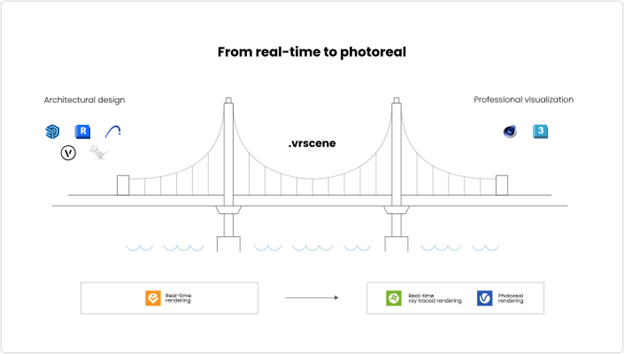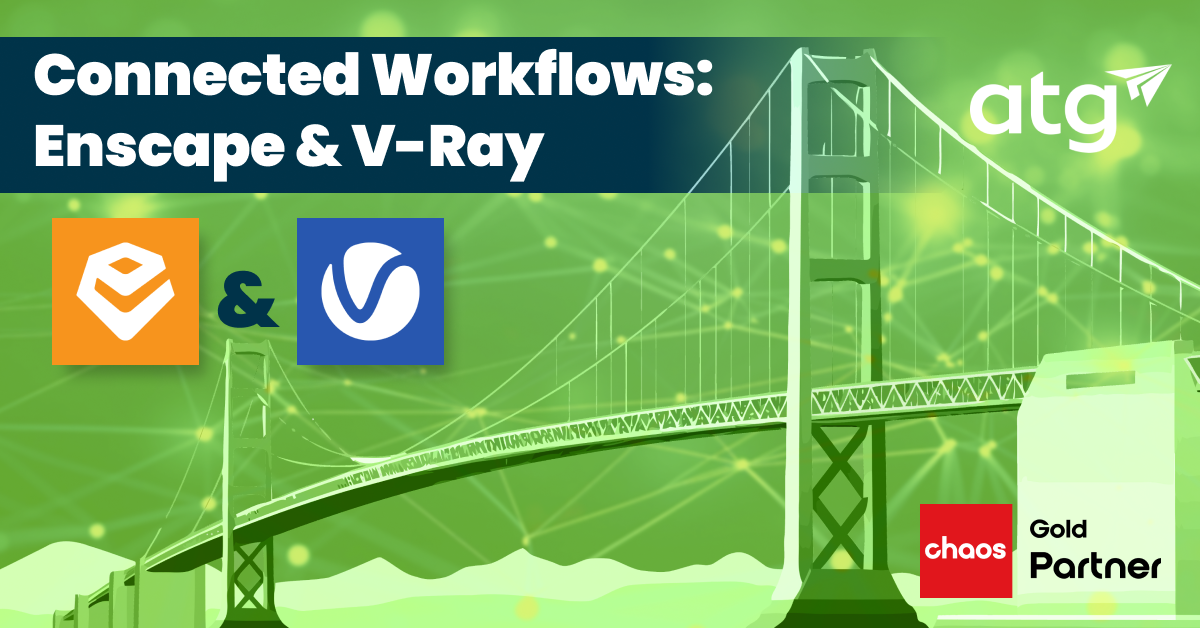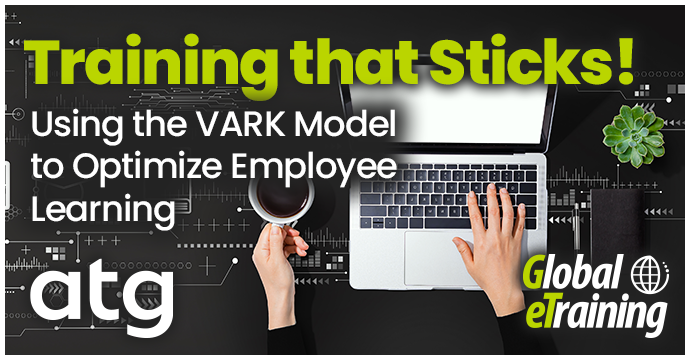Enabling smooth collaboration and interoperability with multiple software platforms has long been a challenge in the world of architectural visualization. Until now! Chaos has introduced enhanced interoperability between Enscape and V-Ray, allowing architectural designers, visualization specialists, and architecture firms to experience advanced visualization capabilities, accelerated design, and seamless collaboration.
How does it work?
Through Chaos’ standardized project file format, .vrscene, all model information including assets, lights, and materials, is packaged together to enable easy transfer of design projects between CAD tools like Revit, SketchUp, Rhino, and DCC software including 3ds Max and Cinema 4D.

Source: Chaos website
By connecting the real-time design workflow in Enscape with the photorealistic rendering capabilities of V-Ray, users can create even higher-quality visualizations while avoiding data loss and ensuring designs are displayed as originally intended.
What are the benefits?
- Enhanced collaboration – Work together effectively with quick feedback and design exploration capabilities.
- Streamlined workflows – Avoid disconnected tools and workflows by switching seamlessly between V-Ray and Enscape.
- Unmatched quality and speed – Achieve unparalleled render quality with V-Ray while ensuring smooth real-time rendering with Enscape.
- Greater flexibility – Finally connect your visualization workflows by combining the power of Enscape and V-Ray for all your rendering needs.
What does that mean for you?
Architectural designers, visualization specialists, and architecture firms rely on visualization tools to bring their designs to life. With the introduction of enhanced interoperability for Enscape and V-Ray, design professionals can reap many benefits including improved render quality, streamlined collaboration, and more:
Architectural Designers
While real-time rendering solutions are great for rapid visualization, they often sacrifice design elements that enhance render quality, like accurate lighting or complex material effects. By leveraging Chaos’ interoperability, designers can access advanced visualization by transitioning from Enscape to V-Ray within Revit, SketchUp, or Rhino. Combine that with precise lighting, materials, and over 4,500 high-quality assets, as well as the new .vrscene exporter (Beta), designers can easily enhance scenes and transfer designs to visualization specialists without losing their ideas.
Visualization Specialists
For visualization specialists, visualizing architectural projects usually requires navigating multiple software platforms just to convert project data into a usable format for their visualization tool. This is a significant time investment that results in tight deadlines and potential disruptions to creative flow.
With Chaos’ interoperability, artists can leverage the photorealism of V-Ray with the real-time capabilities of Enscape. This allows them to collaborate more effectively with Enscape designers, reclaiming time spent recreating designs. Additionally, the new .vrscene exporter allows artists to import complete Enscape models into 3ds Max or Cinema 4D and then continue refining the project in V-Ray without disrupting design intent.
Architecture Firms
Collaborating on design projects from start to finish often presents a challenge for architecture firms. By implementing V-Ray and Enscape, architectural firms can bridge the gap between design and visualization teams, elevate their proposals to win more projects, and ensure consistency and quality throughout the project.
Conclusion
By utilizing V-Ray and Enscape together, architectural designers, visualization specialists, and architecture firms can achieve a streamlined workflow, create high-quality visuals, and foster better communication, ultimately leading to more successful design and visualization projects.
ATG is here to help with all your visualization needs.
Whether that’s providing software, visualization services, or Enscape training for your team, just reach out and we’ll set you up!



